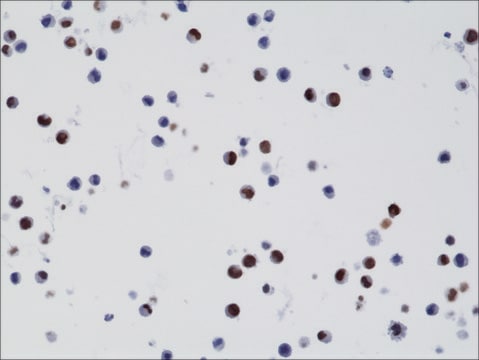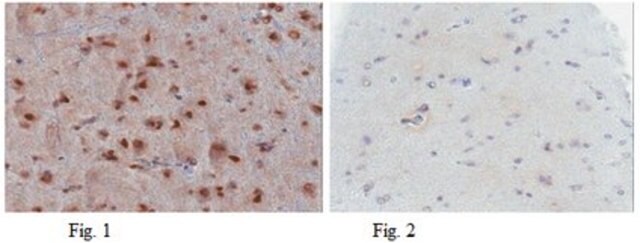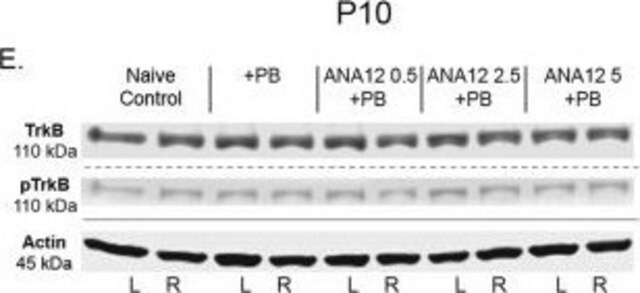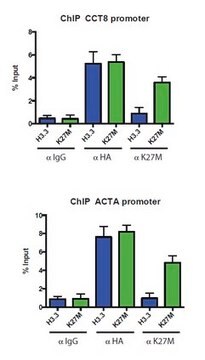P9249
Monoclonal Anti-p53−Biotin antibody produced in mouse
~1 mg/mL, clone DO-1, ascites fluid, buffered aqueous solution
About This Item
Polecane produkty
pochodzenie biologiczne
mouse
Poziom jakości
białko sprzężone
biotin conjugate
forma przeciwciała
ascites fluid
rodzaj przeciwciała
primary antibodies
klon
DO-1, monoclonal
Postać
buffered aqueous solution
masa cząsteczkowa
antigen ~53 kDa
reaktywność gatunkowa
human
stężenie
~1 mg/mL
metody
flow cytometry: suitable
immunocytochemistry: 5-10 μg/mL using human A431
immunohistochemistry: suitable
immunoprecipitation (IP): suitable
western blot: 0.5-1 μg/mL using human A431 cell extracts
izotyp
IgG2a
numer dostępu UniProt
Warunki transportu
dry ice
temp. przechowywania
−20°C
docelowa modyfikacja potranslacyjna
unmodified
informacje o genach
human ... TP53(7157)
Powiązane kategorie
Opis ogólny
Immunogen
Zastosowanie
Działania biochem./fizjol.
Postać fizyczna
Przechowywanie i stabilność
For extended storage, freeze in working aliquots.
Repeated freezing and thawing, or storage in “frostfree”freezers, is not recommended. If slight turbidity occurs upon prolonged storage, clarify the solution by centrifugation before use. Working dilution samples should be discarded if not used within 12 hours.
Inne uwagi
Oświadczenie o zrzeczeniu się odpowiedzialności
Nie możesz znaleźć właściwego produktu?
Wypróbuj nasz Narzędzie selektora produktów.
produkt powiązany
Kod klasy składowania
10 - Combustible liquids
Klasa zagrożenia wodnego (WGK)
WGK 3
Temperatura zapłonu (°F)
Not applicable
Temperatura zapłonu (°C)
Not applicable
Środki ochrony indywidualnej
Eyeshields, Gloves, multi-purpose combination respirator cartridge (US)
Certyfikaty analizy (CoA)
Poszukaj Certyfikaty analizy (CoA), wpisując numer partii/serii produktów. Numery serii i partii można znaleźć na etykiecie produktu po słowach „seria” lub „partia”.
Masz już ten produkt?
Dokumenty związane z niedawno zakupionymi produktami zostały zamieszczone w Bibliotece dokumentów.
Produkty
p53 regulates gene expression, cell cycle control and functions as a tumor suppressor. Inactivation of p53 is closely tied to cancer development.
p53 reguluje ekspresję genów, kontrolę cyklu komórkowego i działa jako supresor nowotworów. Inaktywacja p53 jest ściśle związana z rozwojem raka.
Nasz zespół naukowców ma doświadczenie we wszystkich obszarach badań, w tym w naukach przyrodniczych, materiałoznawstwie, syntezie chemicznej, chromatografii, analityce i wielu innych dziedzinach.
Skontaktuj się z zespołem ds. pomocy technicznej








